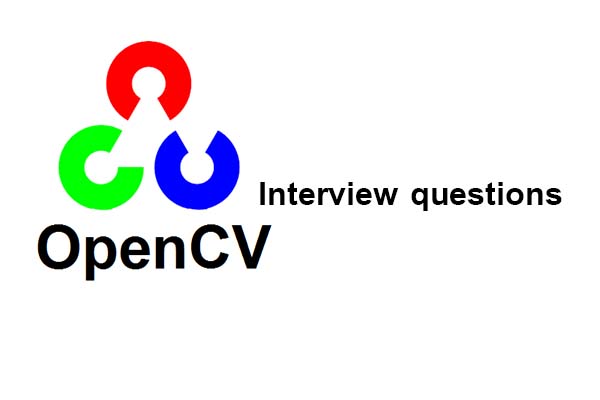What is OpenCV ?
OpenCV is Open Source Computer Vision Library released under BSD license. Below you find some latest interview questions and answers on OpenCV.

OpenCV is Open Source Computer Vision Library released under BSD license. Below you find some latest interview questions and answers on OpenCV.
Below are the list of Best OpenCV Interview Questions and Answers
OpenCV is Open Source Computer Vision Library released under the BSD license, which is free for both commercial and academic use.OpenCV provides a programming interface for Python, C, C++, and Java and supports various platforms like Windows, Linux, iOS, and Android.
Blurring, Smoothing, Distortion, Warp Stabilizer, alpha extract, bilateral, color matrix, chrome hold are few video filters available in OpenCV.
The primary use of the Mat class in OpenCV is to store and obtain the values of any image. This class is used in representing the n-dimensional array and is utilized in storing data of the image of grayscale or color images, vector fields, point clouds, voxel volumes and so on. Mat stands for Matrix and is contained in the namespace of OpenCV. They are represented using a type number of a certain manner.
The cv2.imread() and cv2.imshow() method is used by the OpenCV to read and show images.
The Sobel is a filter in the OpenCV to detect the edge of an image. It detects the edge in both horizontal and vertical directions.
Syntax
Sobel(src, dst, ddepth, dx, dy)
Here src is the object representing the source of the image. Dst is the object representing the output image. Ddepth is the variable representing the depth of the image. Dx and dy are variables representing the x & y derivative.
The cv2.line() method in the OpenCV is used to draw a line.
Syntax
cv2.line(image, start_point, end_point, color, thickness)
Here the image is the source image where the line should be drawn. Start_point and end_point are the coordinates for the starting and ending point of the line. They are represented as a tuple value of x & y. color represents the color for the line. BGR represents the Blue Green Red color values of the line. Thickness represents the thickness of the line in px.
The libraries of the OpenCV are installed in the folder /usr/lib in the ubuntu and directly under the lib folder present in your OpenCV directory on Windows.
cv_8uc1 is an 8-bit single-channel array. It has 2 parts, depth, and various numbers of channels. There is a flexible system that is enough to let the users define some new types with up to 215 channels. CV_8UC1 makes the code clear how many numbers of channels is the code is working with. If someone is dealing with a matrix that contains 10 channels or even more than that, the person needs to specify the number of channels that will be included.
The different types of linear and non-linear filter that you can apply to a picture using OpenCV are, BaeColumn filter, Base filter, BaseRow filter, FilterEngine, Bilateral filter, AdaptiveBilateral Filter, Blur, BorderInterpolate, BoxFilter, BuildPyramid, copyMakeBorder, createBoxFilter, createDerivFilter, createGuassionFilter, createLinear filter, createMorphology filter, createSeparableLinear filter, dilate, erode, filter2D, GuassianBlur, getDerivKernels, getKernelType, getStructuringElement, medianBlur, morphologyEx, Laplacian, pyrDown, pyrUp, pyrMeanShiftFiltering, sepFilter2D, Smooth, Sobel, Scharr.
Never Miss an Articles from us.